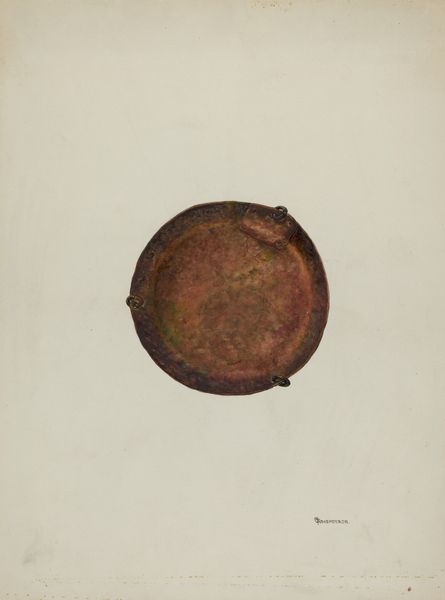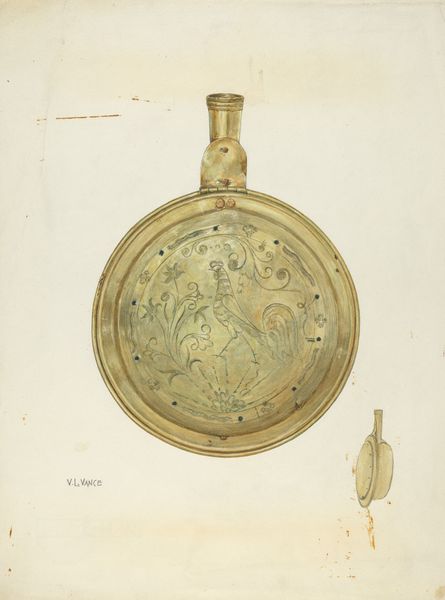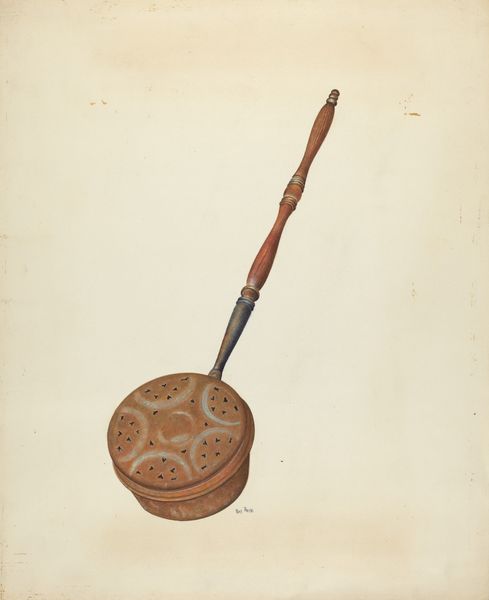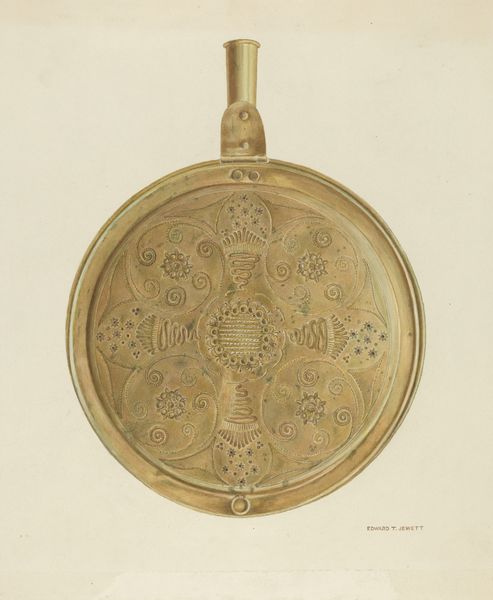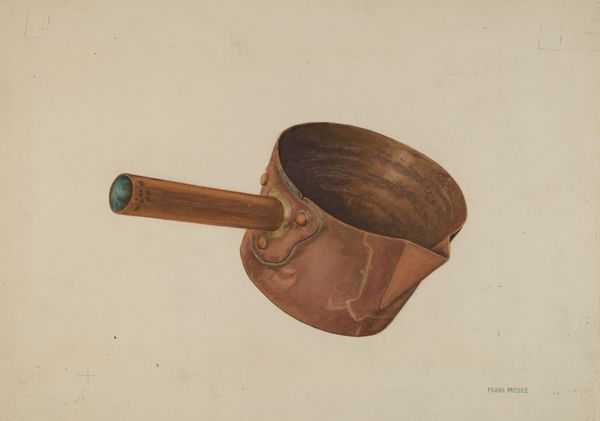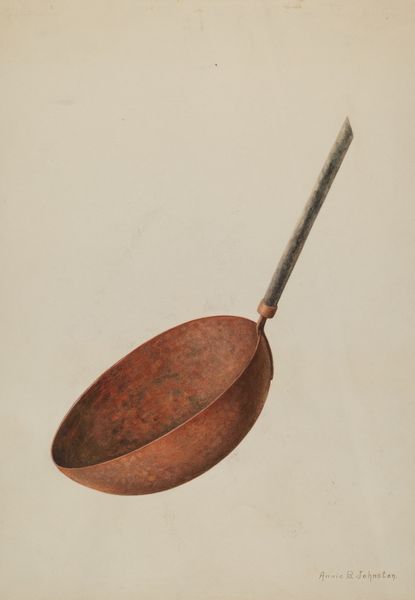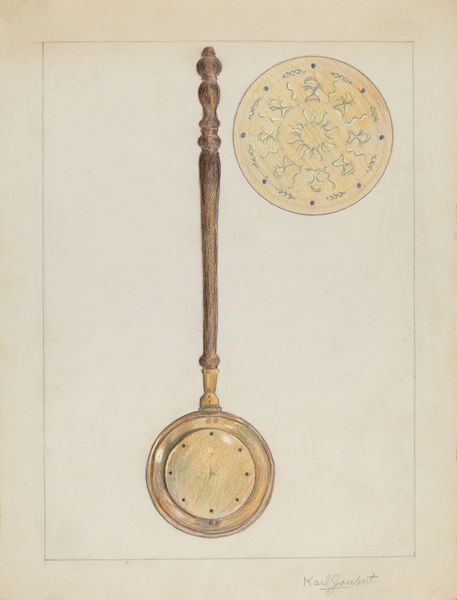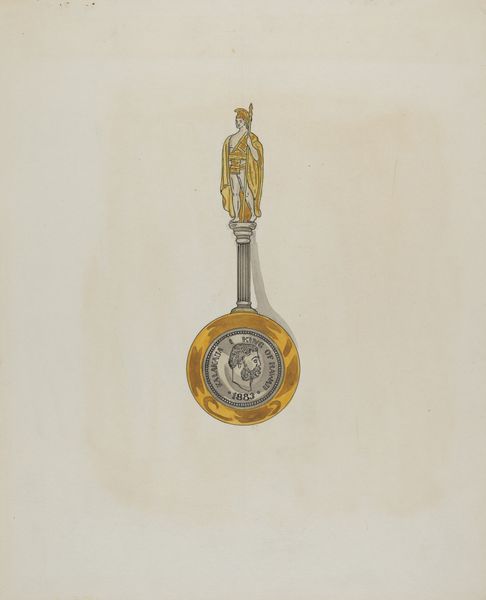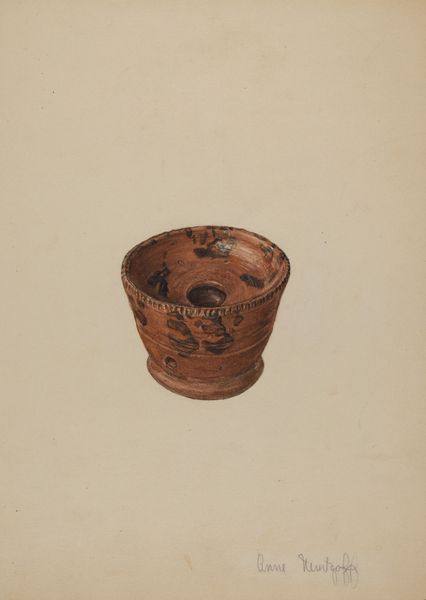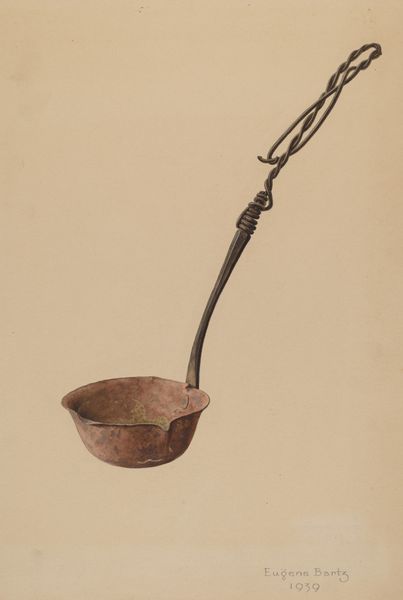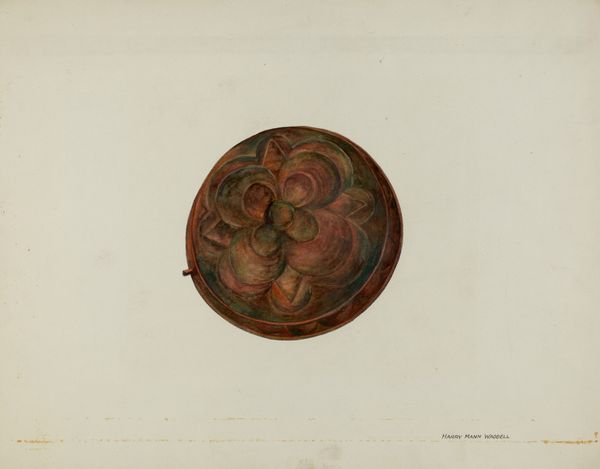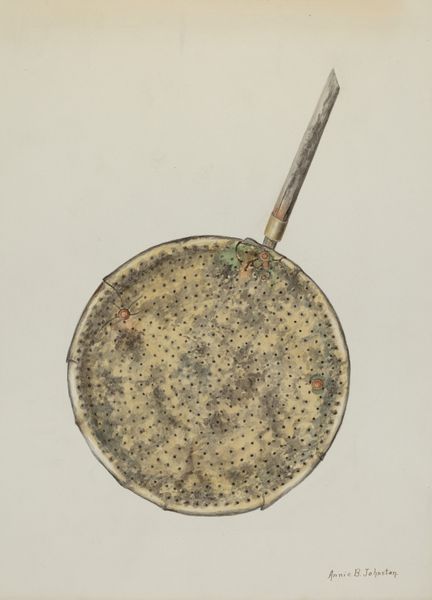
drawing, watercolor
#
drawing
#
still-life-photography
#
charcoal drawing
#
watercolor
#
watercolour illustration
#
realism
Dimensions: overall: 42.4 x 33.3 cm (16 11/16 x 13 1/8 in.) Original IAD Object: 18" long; 8" in diameter
Copyright: National Gallery of Art: CC0 1.0
Curator: This watercolor and charcoal drawing, titled "Panslider," was created circa 1937 by Harry Grossen. What's your first take? Editor: It’s humble, somehow—this perfectly ordinary kitchen object elevated by careful artistry. The detail captures its lived-in texture; it's not idealized but truthfully worn. There’s an intimacy here. Curator: I agree, there is an interesting element of realism. Looking through a broader lens, still life paintings offer intimate glimpses into the lives of the everyday. Considering that this was created during the Great Depression, how might that context inform the subject choice and our understanding of this work? Editor: The Depression was marked by widespread unemployment and hardship. Creating beauty out of mundane objects could be viewed as an act of resistance against prevailing despair and economic constraints, or simply documenting the simple reality of kitchen work during the Depression era. Curator: It is tempting to read into Grossen's intentions through the lens of economic history, but how can we balance that interpretation with a deeper awareness of gender? Consider, the subject is, after all, an item usually wielded by women within the domestic space. Editor: Yes, we should pause and remember labor that is so frequently undervalued. In foregrounding this tool, is Grossen tacitly drawing our attention to the contribution of women's invisible work, an attempt to offer this contribution as an artifact of American industriousness? Or perhaps even offering it up as a sign of labor exploitation? Curator: Such nuance speaks to the value of art's layered ability to signify across time and context. The placement against an off-white backdrop offers no cues. Our attention is squarely focused on the thing itself. Editor: Yes, removed from its typical backdrop of the kitchen, "Panslider" transcends the purely utilitarian. What lingers for me is its ability to serve as an intersectional artifact, opening multiple avenues for us to investigate work, gender, and historical narrative through the artwork itself. Curator: Indeed. It’s fascinating how one unassuming pan can spark so much inquiry. Editor: Exactly, and that's often the most exciting power of art.
Comments
No comments
Be the first to comment and join the conversation on the ultimate creative platform.
